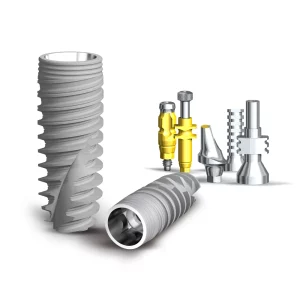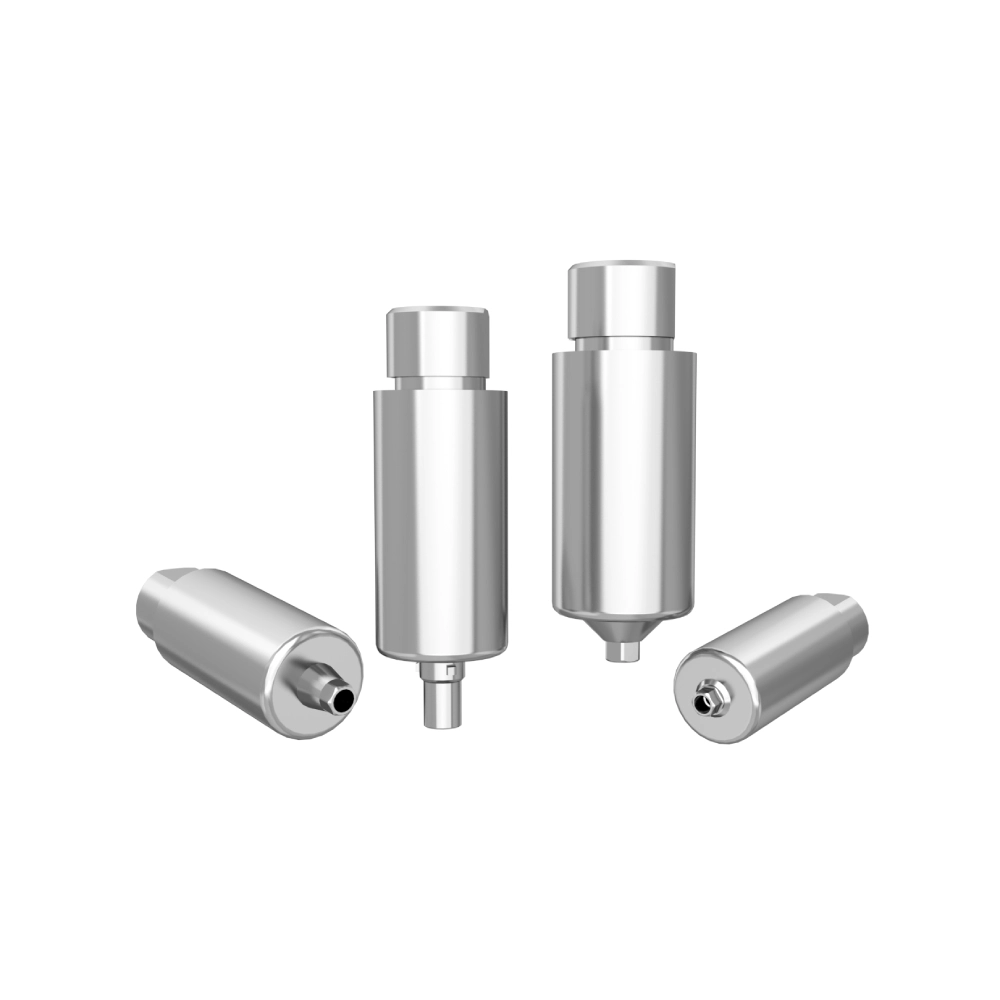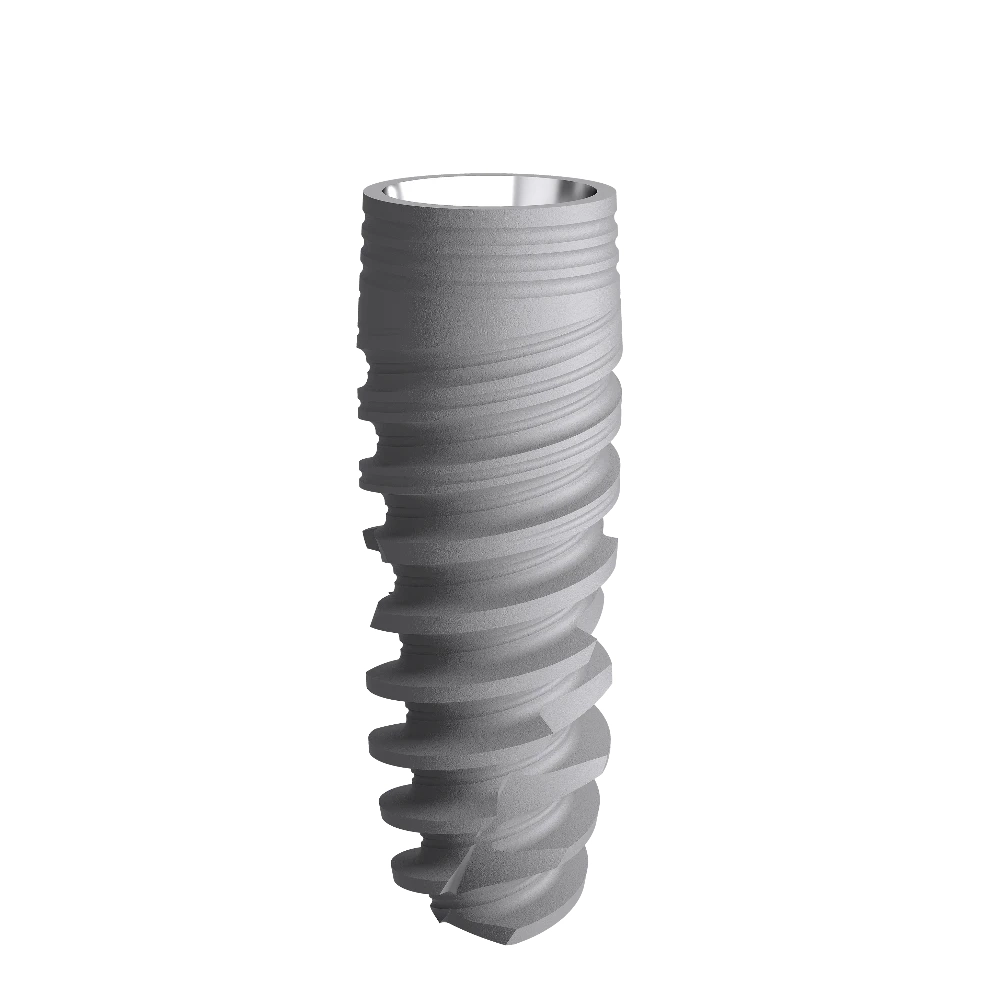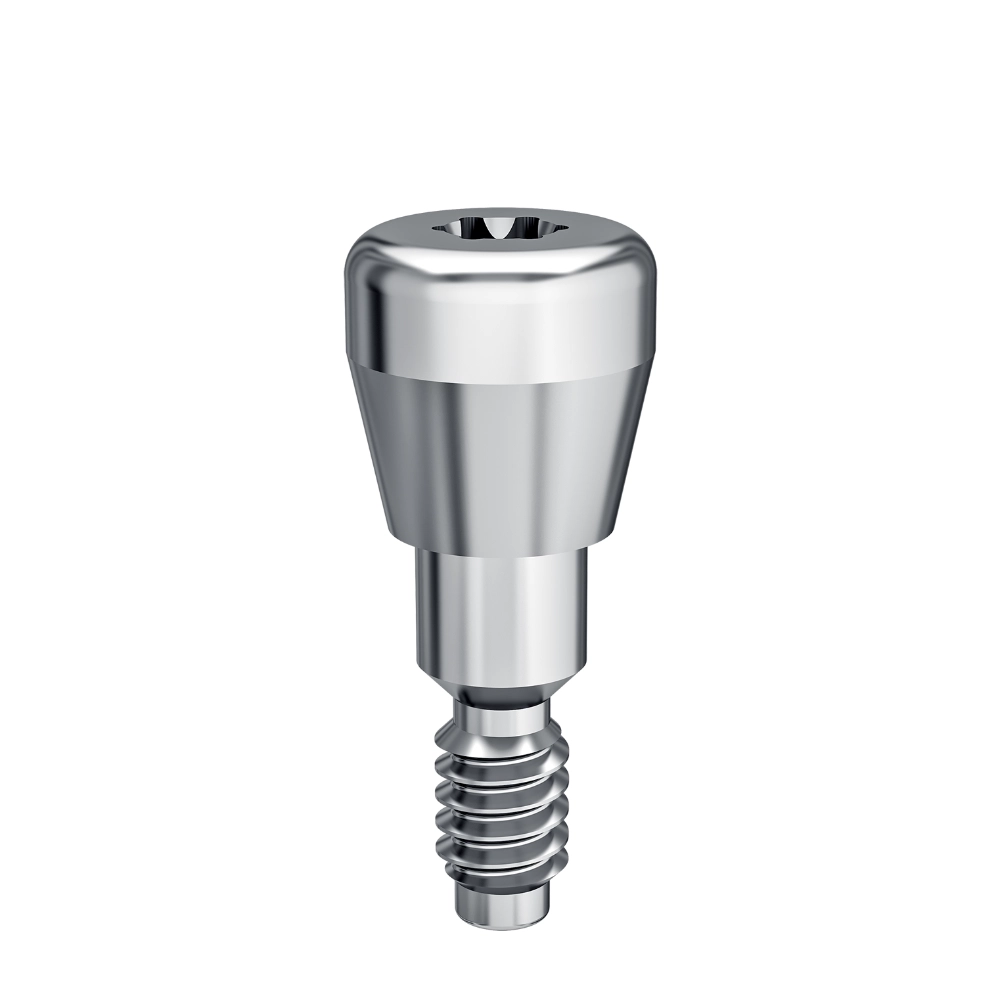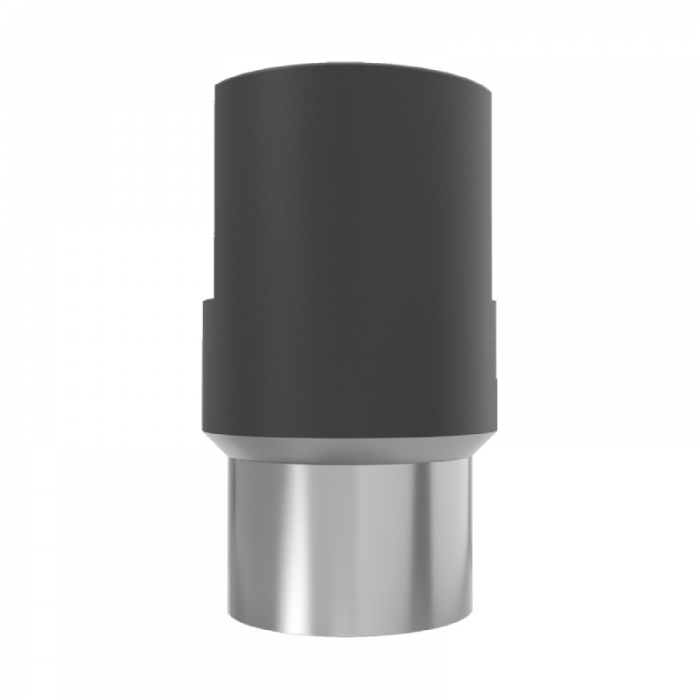
In the field of modern dentistry, with continuous advancements and innovations in technology, an increasing number of solutions have been developed to address various complex oral health issues. Among them, short implants have gradually emerged as a specialized type of dental implant in clinical applications in recent years, offering new hope for patients who struggle with conventional implants due to insufficient bone volume.
This article provides a comprehensive overview of short implants, including their definition, characteristics, advantages, and key considerations when choosing them. By gaining a deeper understanding of short implants, both patients and dentists can work together to develop a treatment plan that best suits individual needs, ultimately achieving better clinical outcomes and higher patient satisfaction.
What Are Short Implants?
According to the latest 2023 guidelines from the International Congress of Oral Implantologists (ICOI), short implants are officially defined as dental implant systems with a length of less than 8mm. This revolutionary implant solution is specifically designed for patients with insufficient alveolar bone height, particularly in complex anatomical areas such as the maxillary sinus region or near the inferior alveolar nerve.
Compared to conventional implants, which often require additional bone grafting procedures to ensure implant stability, short implants stand out for their minimally invasive nature. They significantly reduce surgical complexity and shorten post-operative recovery time.
This innovative implant design not only accommodates anatomical limitations but also minimizes surgical trauma and discomfort, allowing more patients—who might otherwise be excluded from implant treatment due to inadequate bone volume—to regain functional and aesthetically pleasing teeth. The successful application of short implants requires strict case selection and precise 3D-guided implant placement. In high-load areas such as the molar region, multiple short implants may be used in combination to distribute occlusal forces effectively.
Optimal Indications for Short Implants: When to Choose This Innovative Solution?
The selection of indications for short implants should be based on an individualized assessment of the patient’s specific condition, as there are no absolute, one-size-fits-all recommendations. However, in certain clinical scenarios, short implants present distinct advantages, making them a preferable treatment option. Below are some key indications:
1. Patients with Maxillary Bone Conditions:
For individuals suffering from chronic sinusitis, allergic sinusitis, or other maxillary bone diseases that prevent sinus lift procedures to increase bone thickness, short implants provide a viable alternative. While such conditions are relatively rare, the long-term placement of conventional implants in these patients may be contraindicated.
2. Severe Alveolar Ridge Deficiency with Limited Bone Volume:
When significant bone defects result in inadequate alveolar ridge height, viable treatment options may include complex ridge augmentation procedures or the use of short implants. This issue is particularly common in the posterior mandible. Although vertical bone augmentation is another potential solution, such procedures are highly complex, requiring advanced surgical expertise and carrying a higher risk of complications.
3. High-Risk complications:
Not all complications are severe or irreversible, but certain surgical procedures—such as mandibular nerve lateralization (moving the nerve bundle to accommodate an implant)—can result in approximately 20% of cases experiencing nerve damage, leading to complete loss of mandibular sensation. Even in cases without major complications, patients may endure prolonged discomfort and pain. In these high-risk situations, short implants are a more favorable option due to their minimally invasive nature and reduced risk of post-surgical complications.
Success Rate and Recommendation Levels for Short Implant Indications
| Indication Type | Success Rate | Recommendation Level | Evidence Level |
|---|---|---|---|
| Maxillary Sinus Region | 93.2% | A | Ia |
| Inferior Alveolar Nerve Proximity | 91.8% | A | Ib |
| Osteoporosis Patients | 89.7% | B | IIa |
| Immediate Restoration | 95.1% | A | Ia |
Note: Success rate data is sourced from the 2022 JOMI multicenter study with a follow-up period of ≥5 years.
Short Implants vs. Standard Implants: Key Clinical Comparisons
One of the most critical considerations in implant dentistry is determining whether short implants can perform as effectively as standard-length implants. The following table highlights key differences:
| Factor | Short Implants (<8mm) | Standard Implants (≥10mm) |
|---|---|---|
| Surgical Time | ~1.5 hours | 3+ hours (including grafting) |
| Bone Requirement | Minimum 4mm vertical bone height | Requires 8-12mm bone height |
| Indications | Ideal for patients with limited bone | Suitable for standard bone conditions |
| 10-Year Survival Rate | 94.6% (JOMI 2022) | 96.8% |
| Cost | 30-50% savings by avoiding bone grafting | Additional costs for bone augmentation |
Key Takeaway: While short implants may have slightly lower survival rates than traditional implants, they significantly reduce surgical trauma and cost, making them a preferred choice for many patients.
Advantages of Short Implants
- Minimally Invasive with Faster Recovery
Short implants require less drilling, minimizing trauma to the surrounding bone. This results in:- Less post-operative pain and swelling
- Faster healing with fewer complications
- Reduced risk of nerve damage or sinus perforation
- Feasibility of Immediate Loading
Recent studies indicate that short implants can support immediate loading protocols, allowing patients to receive prosthetic teeth within 72 hours in many cases. This is an excellent option for those seeking a quick and efficient restoration. - Suitable for Complex Anatomical Conditions
Short implants are ideal for patients with:- Low maxillary bone height (avoiding sinus lift procedures)
- Thin mandibular ridge (reducing the risk of nerve injury)
- Chronic conditions affecting bone healing, such as diabetes or osteoporosis
Clinical Evidence: Reliability and Risk Control of Short Implants
1. Systematic Review from Authoritative Sources (Highest Level of Evidence in Evidence-Based Medicine)
According to the latest systematic review by the Cochrane Library (2023), which included 47 RCTs (n = 5,892):
Success Rate Comparison
| Indicator | Short Implants | Standard Implants | P-Value |
|---|---|---|---|
| 1-Year Survival Rate | 98.2% | 98.5% | 0.672 |
| 5-Year Survival Rate | 94.6% | 95.8% | 0.451 |
| Marginal Bone Loss | 0.82mm | 0.79mm | 0.712 |
| Prosthetic Stability | 96.3% | 97.1% | 0.589 |
Conclusion: When used within proper indications, short implants demonstrate no statistically significant difference (P > 0.05) in clinical outcomes compared to standard implants.
2. Long-Term Clinical Study Data
A 2022 multi-center study published in JOMI (n = 2,347, follow-up period: 5–10 years) reported:
Success Predictors
- Implant diameter ≥ 5 mm (success rate increased by 15.2%)
- The platform-switching design reduced marginal bone loss by 23.4%.
- Precise 3D-guided implant placement (improved primary stability by 31.7%)
Failure-Related Factors
- Bone density < 350 HU (failure rate increased 4.8x)
- Occlusal force > 250N (failure risk increased 3.2x)
- Smoking >10 cigarettes/day (failure rate increased 2.7x)
3. Risk Control Strategies
Biomechanical Optimization Plan
Implant Selection:
- Wide-diameter implants (≥ 5 mm)
- Tapered-locking connection design
- SLActive surface treatment technology
Surgical Techniques:
- Precision 3D-guided navigation
- Insertion torque controlled at 35–45 Ncm
- Gradual loading protocol
Post-Operative Maintenance Plan
| Time Point | Checkup Content | Intervention Measures |
|---|---|---|
| 1 Month Post-Op | Primary stability assessment | Adjust occlusion for light contact |
| 3 Months Post-Op | Osseointegration evaluation | Gradual loading |
| 6 Months Post-Op | Prosthesis integrity check | Minor occlusal adjustment |
| Annual Follow-Up | Marginal bone level monitoring | Professional maintenance |
Clinical Recommendation: For high-risk patients (e.g., heavy smokers and diabetics), a multi-unit short implant-supported restoration is recommended to distribute occlusal forces and enhance long-term success rates.
Clinical Workflow: Precise Evaluation and Scientific Selection of Short Implants
In clinical practice, selecting short implants requires adherence to a rigorous workflow to ensure optimal treatment outcomes and patient satisfaction. Below is a detailed workflow:
Patient Evaluation
Medical History Collection
- Conduct a comprehensive review of the patient’s medical history, including systemic diseases, allergies, and oral conditions.
- This step provides essential references for treatment planning.
Bone Quality Assessment
- Evaluate the patient’s bone condition using palpation, X-ray examination, and other diagnostic tools.
- Assess bone density and volume to determine the most suitable implant selection.
3D CBCT Imaging
Utilizing advanced 3D CBCT imaging technology, precisely measure the available bone height and density in the patient’s oral cavity.
- This step is critical for determining implant length, diameter, and optimal placement position, ensuring the best possible osseointegration.
Occlusal Load Analysis
- Conduct an occlusal load analysis to evaluate the patient’s bite force and risk of bruxism.
- This helps clinicians select the most suitable implant and surgical approach to ensure long-term stability and durability.
Implant Selection
- Choose the appropriate short implant size and angulation based on the patient’s bone quality, bone volume, and occlusal load.
- Ensure the implant is well-adapted to the patient’s oral environment for optimal treatment outcomes.
Surgical Approach
- Utilize minimally invasive drilling techniques to reduce trauma to surrounding tissues and promote osseointegration.
- During surgery, precisely control drilling depth, direction, and angulation to ensure proper implant placement.
When Should Short Implants Be Avoided?
Despite their advantages, short implants may have limitations or contraindications in certain cases. The following are situations where short implants may not be suitable:
1. Severe Bone Resorption
- Patients with significant bone resorption may require additional bone grafting to provide sufficient bone support.
- In such cases, long implants or bone augmentation procedures may be more appropriate.
2. High Occlusal Force Without Adjustment
- Patients with strong occlusal forces who have not undergone occlusal adjustment may face an increased risk of implant failure.
- Occlusal adjustments should be performed before short implant placement to reduce excessive force on the implant.
3. Inexperienced Surgeons
- Short implant placement requires advanced surgical skills and extensive clinical experience.
- Surgeons without specialized implant training may face a higher risk of surgical complications and implant failure.
- It is crucial to ensure that the surgeon has adequate expertise when choosing short implants.
Frequently Asked Questions (FAQ)
1. How long can short implants last?
Clinical studies show that when properly placed, short implants have a 10-year survival rate of 94-96%, comparable to standard implants.
2. If I have low bone volume, do I need a short implant?
Not necessarily. Some cases may still require bone grafting, but short implants can be a viable alternative in many situations.
3. Why do short implants sometimes require more implants?
Since short implants distribute less load per unit, additional implants may be needed to ensure long-term stability.
4. How do short implants compensate for lower occlusal force resistance?
- Using wider implants to increase surface contact.
- Adjusting prosthetic design to evenly distribute the load.
- Employing angled abutments to enhance biomechanical efficiency.
Conclusion
For patients with limited bone volume, short implants offer a minimally invasive, cost-effective, and clinically reliable alternative. While they require careful consideration regarding occlusal load and placement, advancements in implant design and surface technology have significantly enhanced their performance.
For many patients, short implants can be a life-changing solution, eliminating the need for extensive bone grafting while maintaining long-term function and aesthetics.
If you are considering dental implants but have been told you lack sufficient bone volume, short implants may be the perfect solution for you. Consult your implant specialist today to explore your options!

